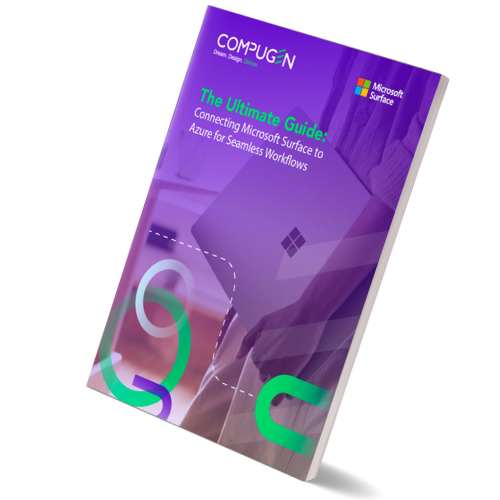Before diving into Microsoft’s ecosystem, it is first essential to understand what an ecosystem entails. In the context of technology, an ecosystem is a term used to refer to an interconnected and interdependent network of diverse IT resources that function as a unit. Therefore, Microsoft’s ecosystem is a network of its enterprise products and cloud services operating as a single system.
Some of these products include Microsoft 365, Azure, and Surface, which work and interact with each other. Therefore, in simpler terms, Microsoft’s ecosystem is a network of integrated hardware, software, and services that function as a single system.
Microsoft Azure + Surface
Microsoft Azure, or simply Azure, is a cloud computing platform providing a broad range of cloud services, the most common being computer, analytics, storage, data management, and communication. It is essentially a virtual desktop that lets users choose to use their preferred tools and technologies.
On the other hand, Microsoft Surface is a family of premium tablets, PCs, and interactive whiteboards that run on Windows OS. The engineering of Surface models has raised the bar for the innovation of computing devices. Surface has redefined how users interact with devices by touch, ink, voice, or surface dial, offering a premium user experience than legacy devices.
The blend between Azure and Surface offers the experience modern employees expect. Surface models provide the ideal cloud desktop endpoint for users to run the Azure virtual desktop. In other words, running Azure on Surface brings a balance of versatility, performance, portability, and the freedom for employees to work how they see fit.
The Benefits of Integration
Increased Productivity
Azure and M365-powered Surface devices help improve employee productivity in the new era of the digital lifestyle. The explosion of innovation and the evolution of work dynamics in recent times have had a major impact on how people work and live. The new, highly digitized era characterized by remote work comes with a set of challenges, including a constant battle for attention, work-life balance, and an increased desire for meaning and purpose in our lives.
Microsoft helps manage the challenges of the digital lifestyle by delivering technologies that work seamlessly with each other to empower digital workers rather than overwhelm them. The integration between Azure and Surface offers seamless productivity by empowering employees to be creative anywhere and how they see fit.
Scalable Options
Microsoft offers Azure cloud computing services in four different forms:
-
software as a service (SaaS),
-
platform as a service (PaaS),
-
infrastructure as a service (IaaS), and
-
serverless functions.
Additionally, these services are charged on a pay-as-you-go (PAYG) basis, meaning users are only charged for their services. Therefore, Azure can help meet the ever-changing workload demands in your workplace.
Simplified Device Management
Thanks to a recent innovative solution known as Windows Autopilot, it’s become easier to deploy and manage new devices in an organization. In the modern work environment where not everyone is centrally located in an office, manually deploying and managing devices is no longer relevant.
Windows Autopilot offers a fast, automatic, and hands-free alternative device deployment process. Users can also remotely monitor, reprovision, and de-provision Surface devices using Azure Active Directory (AD) and Microsoft Intune.
Composability
Security is a huge concern as remote work gets more widespread. This is because of expanded attack surfaces, poor data practices, unsecured hardware, unprotected networks, and sophisticated social engineering attacks. Running Azure on Surface has the added advantage of a more robust security system that guarantees protection at all levels, including cloud, operating system, firmware, and hardware.
Azure and Surface, alongside other Microsoft products and services working as a single unit, help defend against all threats.







.png)